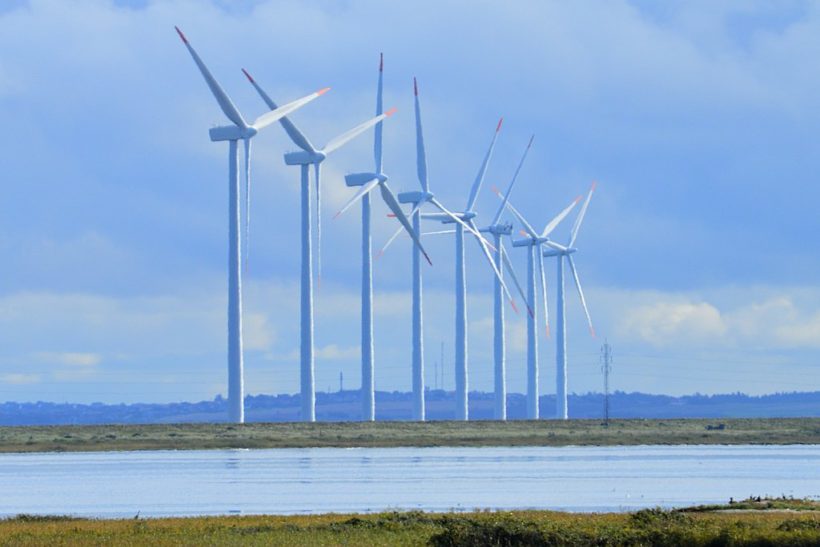By Allen Shuford
This past December the United Kingdom released its much-awaited energy white paper answering how the UK will achieve its goal of net-zero emissions by 2050. Although Boris Johnson’s 10 Point Plan for a Green Industrial Revolution and Theresa May’s Climate Change Act (target amendment) Order 2019, which enacted the 2050 plan into law, gave us glimpses of the future to come, with this document, the government has clearly identified a plan for achieving their goal. The Prime Minister’s 10 Point Plan pledged £12 billion of government funding for investments in wind energy, electric vehicles, hydrogen production, and nuclear energy projects. December’s Energy White Paper: Powering Our Net-Zero Future adds to this and sets out the plan and steps the government will take in implementing these changes.
ELECTRICITY GENERATION
The UK’s electricity sector has decarbonized faster than the other energy sectors in the country and will make up the main base of the UK’s plan. As society transitions to electric vehicles and uses electricity-based, energy-efficient utilities at home, electricity demands will likely double. The electricity sector is unfit to power the entire county on its own as demands increase despite a planned increase in electricity generation which will be four times the current amount (18GW by 2030).
In an effort to remove pressure from the electricity grid, the government plans on hydrogen production as part of the answer. Hydrogen production will be largely funded by private investment to be recouped through costs for consumers, and new plans for incentivizing electricity consumption for consumers to reduce strain on the grid during peak times will be implemented. More on this later.
NUCLEAR POWER AS AN ANSWER
The UK plans to rely heavily on nuclear power to bolster the electricity grid as renewable energy (solar, wind, and hydroelectric) will not be enough to power the country, especially during times without sun, and wind. The exact measures for developing their plan nuclear power are still in the works, but one idea is to create several smaller nuclear plants that will be funded by a combination of government and private investment, again allowing companies to recoup their investment by passing the cost on to the consumer. This model was adopted by the recent Hinkley C reactor built by France’s EDF Energy.
THE OIL AND GAS INDUSTRY
There was very little new information given about the future decarbonization of the oil and gas sector. Most of what was presented were reiterations of previous policy that was presented in the OGUK Roadmap 2035. It is likely that later this year more information will be released about the transition to renewable energy in this sector. One likely proposal will involve the repurposing of current North Sea facilities to produce hydroelectric and hydrogen power.
For this to work, there will also have to be changes in the way that regulatory bodies, such as OGA (Oil & Gas Authority) and OFGEM (Office of Gas & Electricity Management), currently manage their industries. This will involve agencies working closely together with more inter-cooperation between them. There were hints that a new regulatory body will be created to coordinate how the different areas of the energy system can work in tandem after they have been reworked to be solely green energy.
CONSUMERS AND COSTS
Lastly, a certain inevitability seems to be that consumers are expected to see a rise in energy costs. One of the main goals set out is to see that the cost of these changes is evenly shared across socio-economic groups. This means the creation of new incentives, such as the recent Green Homes Grant, to help lower-income families pay for costly but necessary energy-efficient upgrades to their homes. The plan outlines the installation of 600,000 electric heat pumps per year in homes across the UK by 2028. Although consumers will see a rise in energy costs, the improvement of energy efficiency in homes is expected to offset this cost, keeping it affordable for consumers. Flexible models for energy use are proposed which will allow consumers to help relieve strain on the power grid at peak consumption times. This will largely be dealt with by providers in the industry. One example of the flexible programs would be to allow electric vehicles, by this time 100% of vehicles on the road, to be plugged into the grid while they’re not in use enabling them to share power back to the grid at peak times and allowing customers to make money off of this. Opt-in switching is will be tested later in 2021, which allows the government to take a role in automatically switching customers to cheaper suppliers and tariffs if they become available.
In summary, while this white paper builds on previous plans for achieving a net-zero and a “Green Industrial Revolution” in the UK by 2050, there are still many details to be worked out. One thing that is clear is that it will take a massive coordination between all parties involved, including consumers, and a shift in attitude if the plan is to succeed. There will need to be a top-to-bottom restructuring of nearly every part of the current energy system in order to stay on track to meet this target in 30 years’ time. Later in 2021, more information is expected to be released on how each of the Prime Minister’s 10 steps will be further developed, specifically regarding oil and gas.
Allen works as an energy advisor for the green energy website www.theswitch.co.uk where he helps advise consumers on their options for switching to green energy and renewable solutions at home.”



Leave a Reply